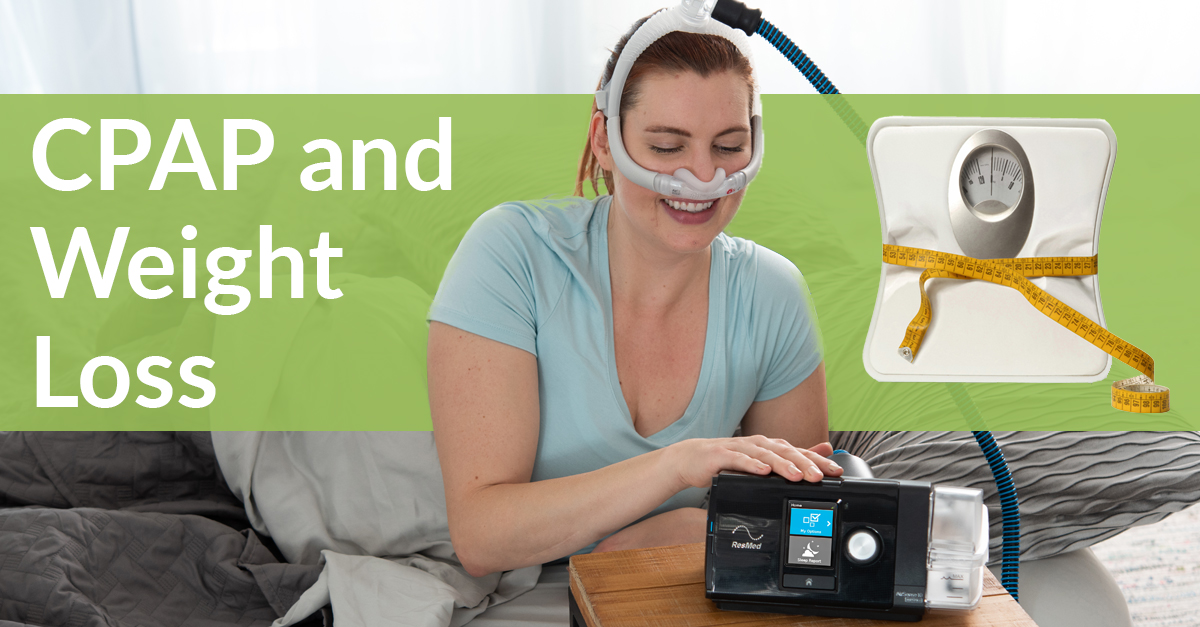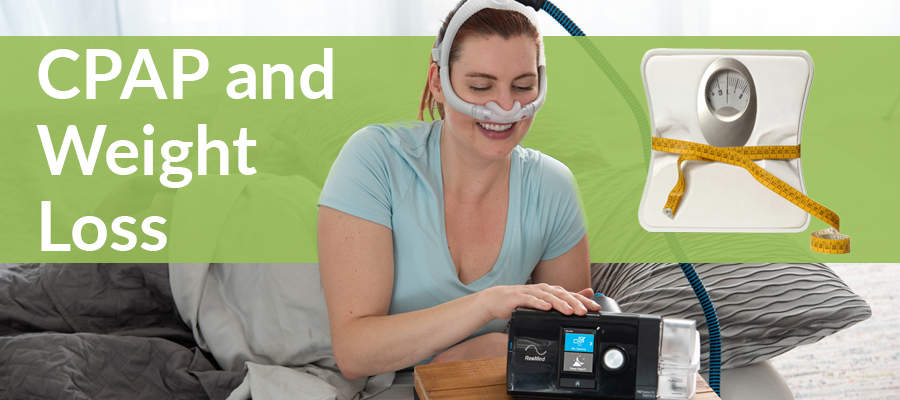

How CPAP is linked to weight loss
One of the most common risk factors of obstructive sleep apnea (OSA) is obesity. OSA and obesity are also both known to cause abnormalities in the cardiovascular system and metabolism.¹ Weight loss can help to reduce these complications, as well as the severity of OSA.¹
Because of this evidence, there’s a common belief that you can stop using CPAP if you lose weight. However, Yuanjie Mao, MD, PhD, an endocrinology fellow physician at the University of Arkansas for Medical Sciences, found the opposite: people with obesity and sleep apnea actually need their CPAP to help them lose weight.²
Study findings on CPAP and weight loss
Mao and his team conducted a study over 16 weeks to investigate the effect of CPAP on obstructive sleep apnea (OSA) patients when used with an intensive weight-loss program. The patients were divided into 3 groups: symptomatic OSA patients who used CPAP, symptomatic OSA patients who didn’t use CPAP, and asymptomatic OSA patients who didn’t use CPAP. They found:
- OSA patients who used CPAP lost an average of 5.7 pounds more than patients who did not use CPAP²
- No significant weight loss difference between the two groups who didn’t use CPAP²
Furthermore, research published in the European Respiratory Journal found that:
- Participants with OSA have higher levels of hunger-signaling hormones³
- After 2 days of CPAP treatment, there is a decrease in hunger-signaling hormones³
- After 8 weeks of nightly CPAP treatment, these hormone levels regulated³
In conclusion, when paired with a dieting program, CPAP plays an important role in helping OSA patients lose weight. Evidence also supports that CPAP can help to manage excess weight by regulating the body’s production of hormones that increase appetite.
How to stay compliant and manage your weight:
By now you’re wondering – how can I make sure my CPAP is treating sleep apnea and reducing risk for obesity? There are a few ways to ensure your CPAP is giving you the best CPAP therapy possible – and therefore helping you manage your weight as well.
Here are 4 tips for CPAP effectiveness and compliance:
1. Make sure you have up-to-date supplies.


When your supplies are old, the therapy will become less and less effective. Because this happens slowly over time, most folks end up not noticing it. Instead, they will tighten their mask a little more, thinking they just need the seal a little closer.
Eventually this leads to over-tightening that can cause pain, marks, and the annoying “hot mask” feeling. The less comfortable your CPAP supplies are, the harder it is to stay compliant and get your CPAP benefits. You can avoid this by replacing your supplies with fresh ones regularly on the recommended, insurance-backed schedule.
Don’t forget – your CPAP supplies could be yours for $0! Allow us to check with your insurance provider for you to find out what is covered (for free!). Click below to get started:
Are your supplies due for a replacement? Check out our standard insurance replacement schedule below:
2. Make sure you have the most comfortable therapy.
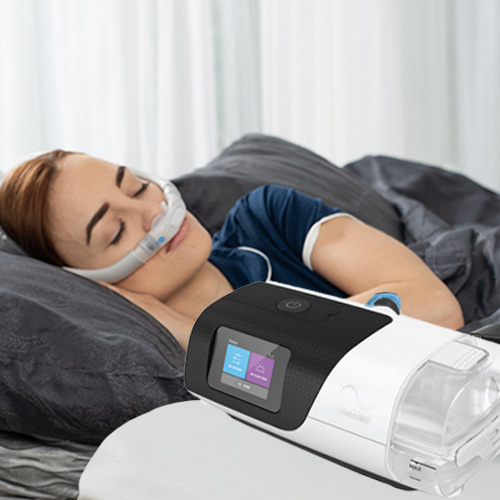

Your pressure needs vary through the night as you sleep. Newer CPAP machines are auto-titrating, meaning they adjust to your needs breath-by-breath for the most effective pressure all through the night. On top of perfecting the pressure for your every breath, they have automatically adjusting comfort settings. ResMed’s AirSense 11 AutoSet offers:
- Humidification: 7 levels of humidity and an optional heated tube ensures you don’t dry out
- EPR: Expiratory Pressure Relief reduces pressure upon exhale, avoiding high pressure mask leaks
- AutoRamp: Starts your sleep therapy at a low pressure so you fall asleep more comfortably
- Humidification: 7 levels of humidity and an optional heated tube ensures you don’t dry out
- EPR: Expiratory Pressure Relief reduces pressure upon exhale, avoiding high pressure mask leaks
- AutoRamp: Starts your sleep therapy at a low pressure so you fall asleep more comfortably
Upgrade to the AirSense 11 today for just $399 down and 0% APR!
3. Clean your CPAP supplies properly.
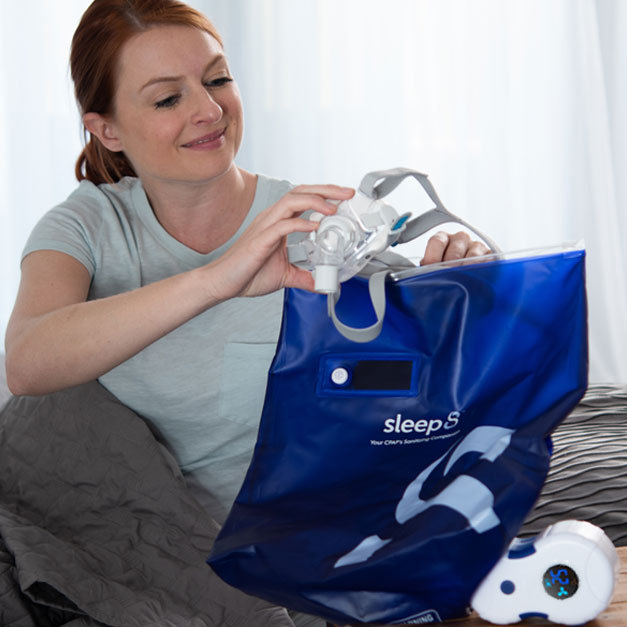

Bacteria builds up on your mask every night, and can make you sick or weaken your mask seal. This causes big barriers to compliance, as they make using CPAP much more of a chore. That’s why keeping your mask and hose clean can be the difference between intolerable and effective CPAP therapy. The Sleep8 CPAP cleaner will keep your supplies sanitary with:
- Ozone technology: Kills over 99% of harmful viruses, bacteria, and mold
- One-click cleaning: Just press a button and let the Sleep8 do the rest
- Complete compatibility: No adapter needed to use with any mask and machine
- Ozone technology: Kills over 99% of harmful viruses, bacteria, and mold
- One-click cleaning: Just press a button and let the Sleep8 do the rest
- Complete compatibility: No adapter needed to use with any mask and machine
Save $100 when you buy the Sleep8 today!
4.Use a mask that makes sleeping enjoyable.
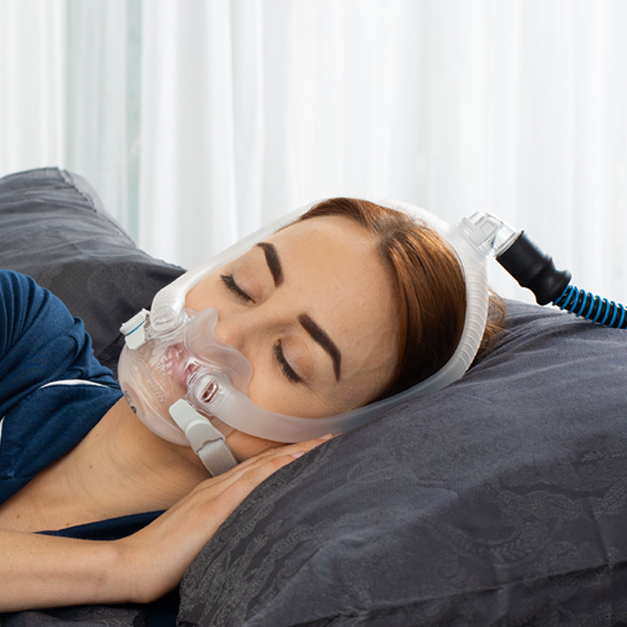

Finding the right mask for your face can be frustrating, but newer masks are designed to fit more people every day. If leaks from your mask are giving you trouble, the AirFit F30i Full Face Mask will be a great change. Unlike other masks that seal up over and around the bridge of your nose, the F30i will seal around the bottom of your nose and also provides:
- Minimal design: Reduces claustrophobia and allows you to sleep in any position
- QuietAir™ technology: Makes for a quieter experience for you and your bed partner
- SpringFit™ frame: Automatically adapts to fit you for a personalized, secure fit with every use
- Minimal design: Reduces claustrophobia and allows you to sleep in any position
- QuietAir™ technology: Makes for a quieter experience for you and your bed partner
- SpringFit™ frame: Automatically adapts to fit you for a personalized, secure fit with every use
Save $20 on the AirFit F30i today!
Don’t miss out on your insurance coverage! Find out if the AirFit F30i is covered today:
Sources:
- Romero-Corral, A., Caples, S. M., Lopez-Jimenez, F., & Somers, V. K. (2010). Interactions between obesity and obstructive sleep apnea: implications for treatment. Chest, 137(3), 711–719. https://doi.org/10.1378/chest.09-0360
- ENDO 2019 News: Cpap Machine IMPROVES weight loss in Dieting adults with obesity, sleep apnea. (2019, March 24).
- Harsch IA, Konturek PC, Koebnick C, Kuehnlein PP, Fuchs FS, Pour Schahin S, Wiest GH, Hahn EG, Lohmann T, Ficker JH. Leptin and ghrelin levels in patients with obstructive sleep apnoea: effect of CPAP treatment. Eur Respir J. 2003 Aug;22(2):251-7. doi: 10.1183/09031936.03.00010103. PMID: 12952256.



